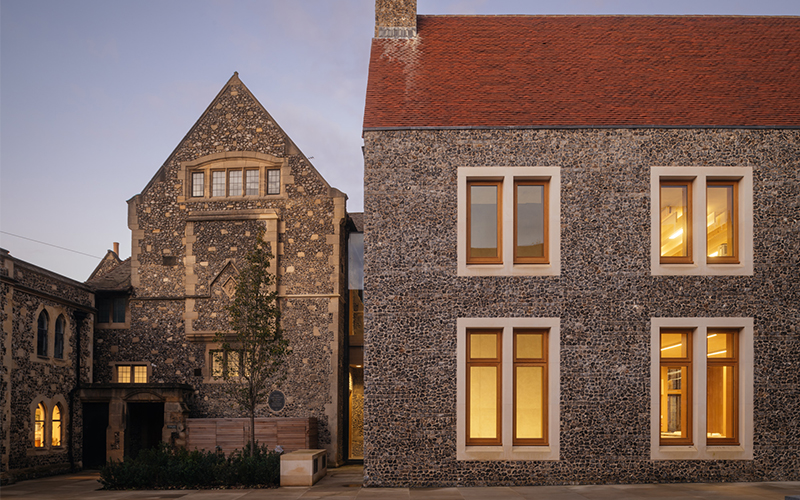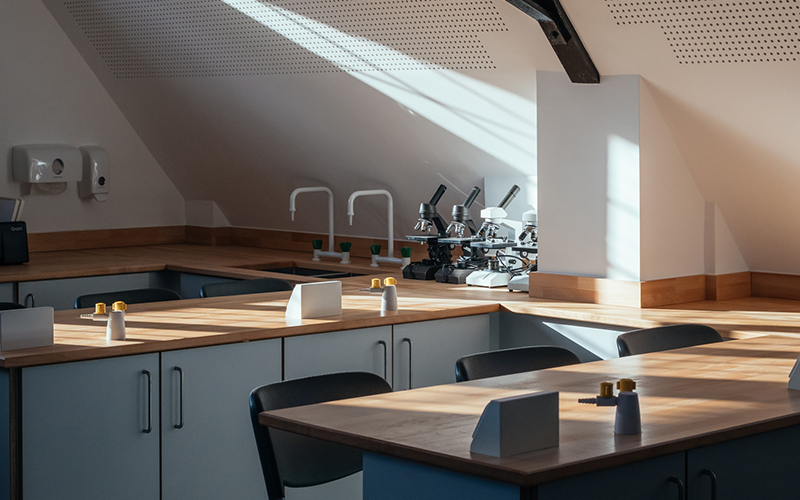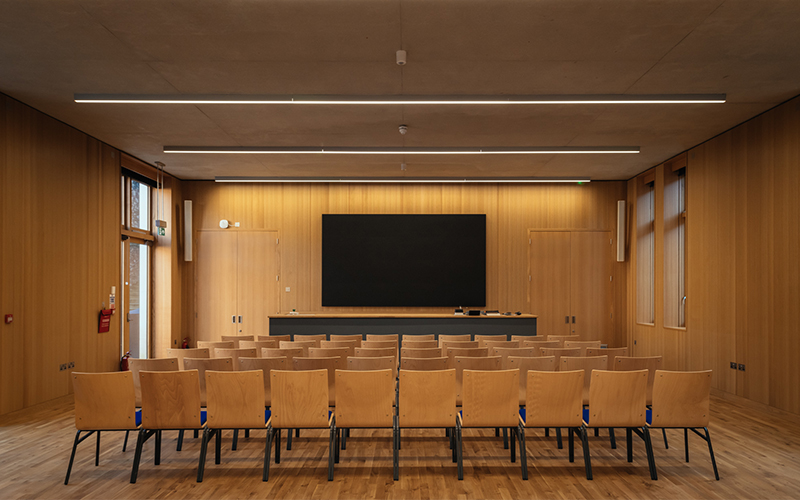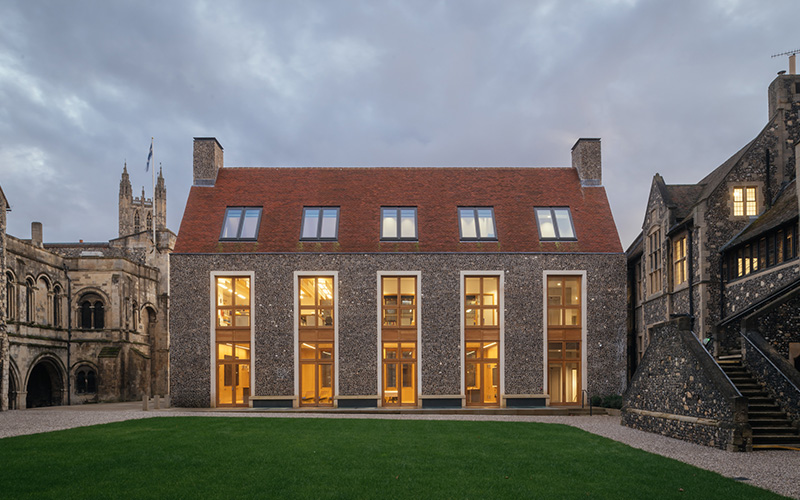King's School Canterbury - Rausing Science Centre





World-class science facilities for a larger student body in the UK’s most historic school.
A teaching block featuring six state-of-the-art physics labs, an auditorium for 140 people, and staff and circulation areas. It connects to refurbished biology and chemistry facilities, fostering interdisciplinary collaboration. It is the first new build on Canterbury's Cathedral precinct since the 1970s.
The King's School Canterbury is an independent, co-educational, day and boarding school located in Kent; located within a site with multiple historic designations including Scheduled Ancient Monument, Conservation Area, Area of Archaeological Importance, as well as World Heritage Site. Nestled in this culturally cherished environment, and with a community deeply invested in preserving the school's heritage, the Rausing Science Centre demanded careful consideration and construction, to integrate modern design with its Grade I-listed surroundings at the Mint Yard in the Precincts.
Skelly & Couch provided services from feasibility to completion, continuing a successful series of commissions with the school. The building sympathetically accommodates the flint and stonework of the new and existing façades. Its first and second floors feature four physics laboratories, the ground floor hosts a flexible science auditorium for teaching and lectures for up to 140 people, and divisible for smaller audiences.
Roman roads were excavated to create a new basement housing two labs, offices, staff and prep rooms, and a boiler room, which houses the building's heating system as well as a new, efficient system for the Grade II Listed Parry Hall, now connected via a glazed link that enhances access and usability of both buildings.The building optimises internal conditions with ample daylighting and natural ventilation, ensuring sufficient fresh air while minimising overheating. This is achieved through strategic openings, thermal mass for passive cooling and deep window reveals that provide shading reducing solar gains. A control system monitors temperature and air quality, enhancing energy efficiency, comfort, and well-being, while the use of LED lighting and low-water-use fittings further contributes to sustainability.
The Rausing Science Centre combines cutting-edge science facilities with the school's rich historical context, fostering collaboration and supporting the needs of a growing student community.




